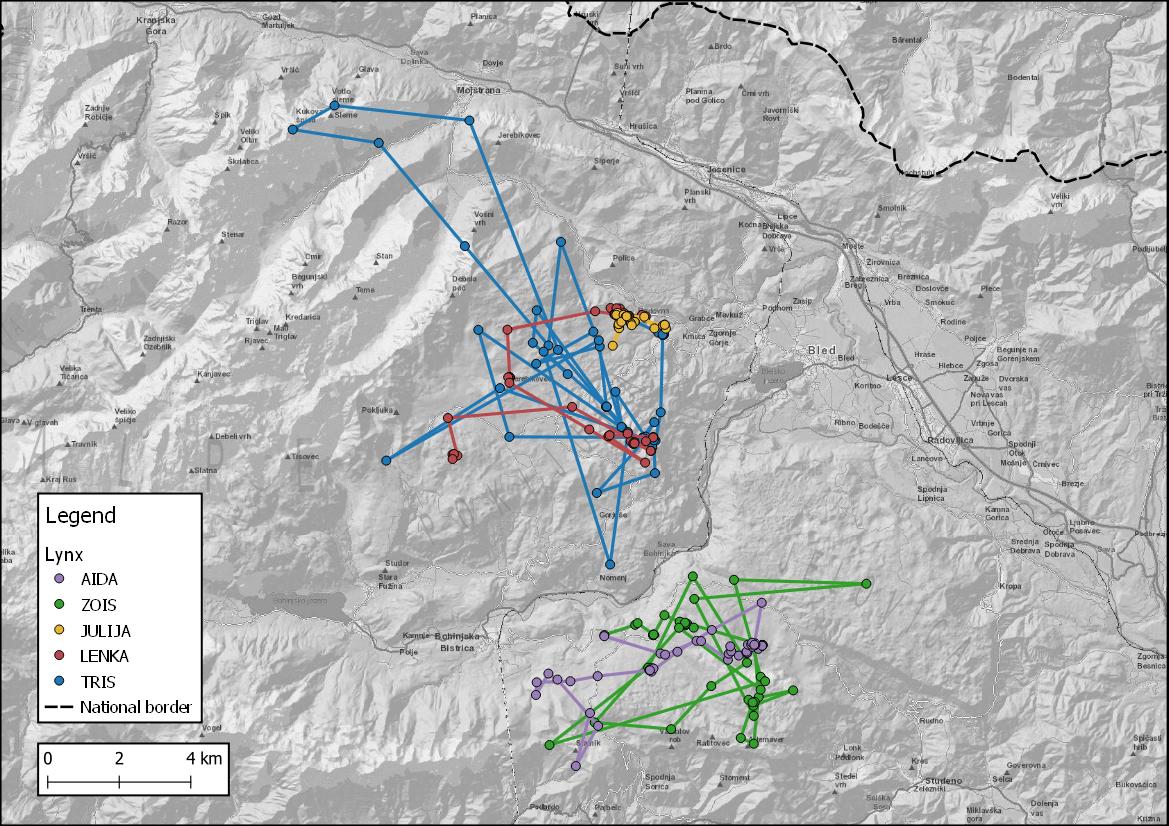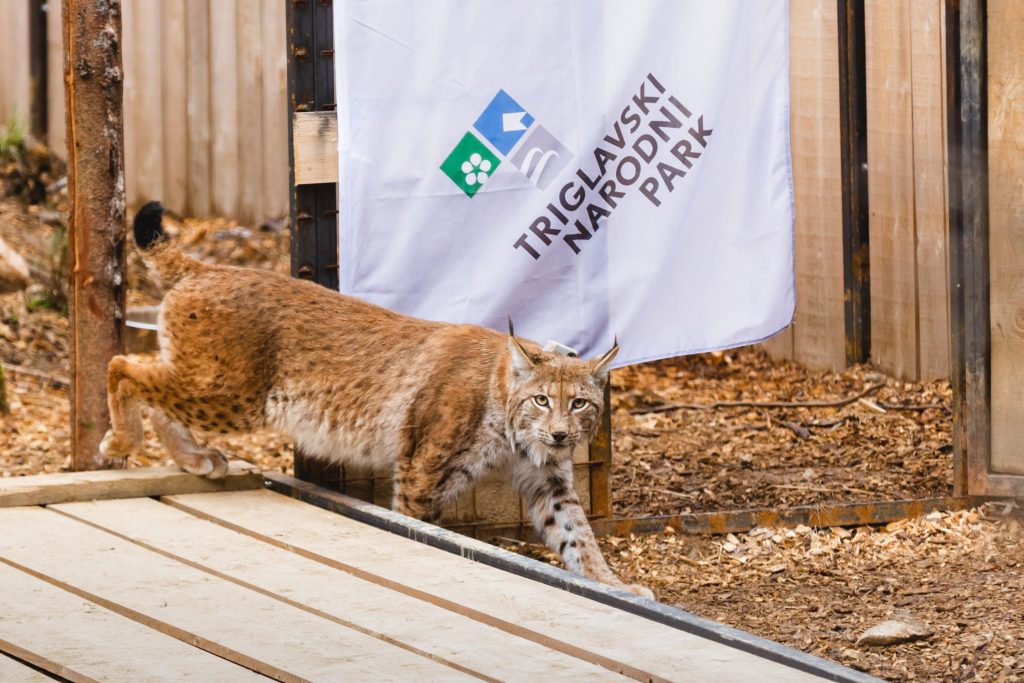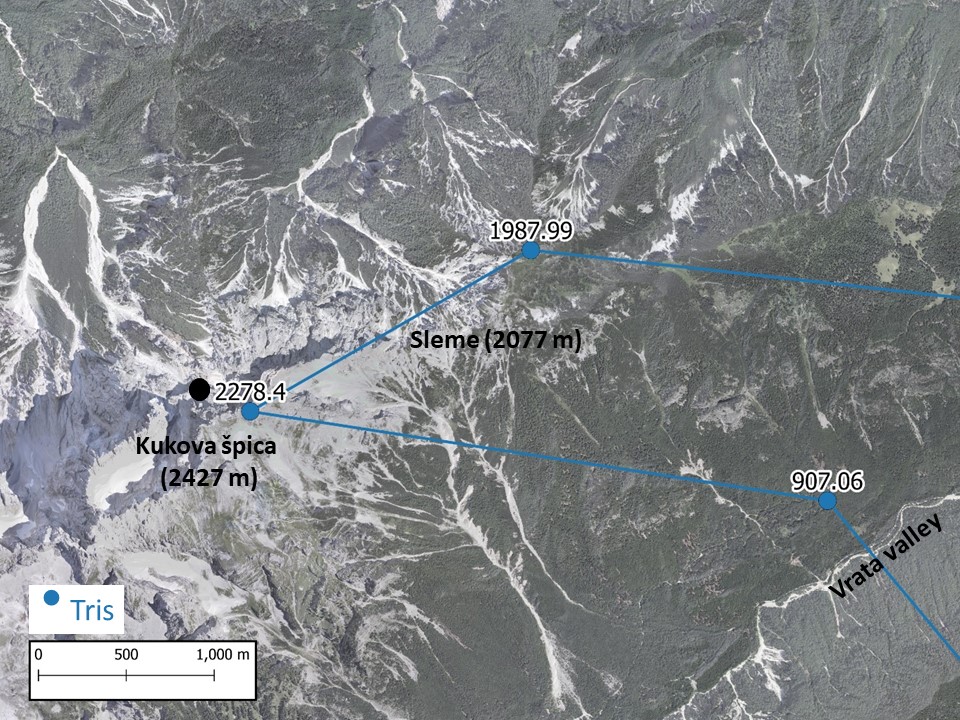LIFE Lynx project team is closely monitoring how the five lynxes translocated to the Southern Alps in Slovenia are exploring their new environment. According to the latest data from their telemetry collars, Zois and Aida stayed in the broader area of Jelovica and Tris, Julija, and Lenka are exploring the Triglav National Park and other parts of the Pokljuka plateau.

Map of the movements of lynxes translocated to Southern Alps in Slovenia.
We also checked the situation in the field and we discovered that all translocated lynxes are successful in capturing their prey. According to the data from their collars, Zois and Aida shared at least two preys. Together with local hunters, we also examined some of the prey locations. Julij Benedičič from Železniki Hunting Club joined the LIFE Lynx team in one of these occasions: We, the hunters are very interested in knowing how the lynxes are adjusting to their new environment and this is why I’ve decided to join the team in the search for the lynxes’ prey remains.” The search team discovered that a lynx captured a female roe deer. We cannot say if it was Zois or Aida who captured the prey, but we can say, that they both fed with it for at least a few days.
Another interesting story is of lynx Tris. As a true “Triglav lynx” he went hiking on a nearby peak called Kukova špica (2427 m), and showed us, that high elevations and snow cover are no obstacles for a lynx. Now he is back on Pokljuka plateau moving in the area where female lynx Lenka is present.

Lynx Tris. Photo: Polona Bartol

Map of Tris’ movements around Martuljek mountain chain with a location near Kukova špica (2427 m). The numbers on the map are meters of altitude, where Tris was recorded.
Modern technology enables us to closely monitor where the lynxes are moving and this invaluable data will show us where the lynxes will establish their territories. This is a crucial step in the establishment of this “stepping stone” population that will in the long-term connect the Dinaric and Alpine lynxes, thus help save the Dinaric-SE Alpine lynx population from extinction, and enable the conservation of lynx in this part of Europe.
Fingers crossed that all five translocated lynxes stay in this area and maybe already soon contribute their genes to the Dinaric-SE Alpine lynx population.
